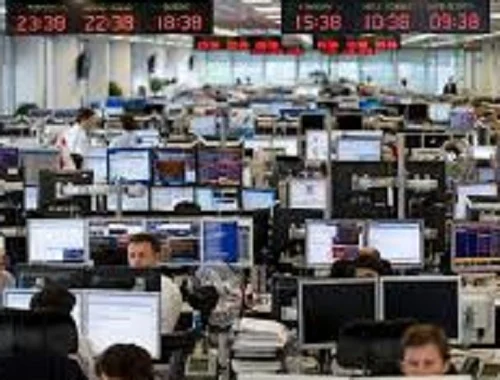The Coronavirus Shock: Investment Challenges
14th April, 2020|Nicholas Sargen

By Nicholas Sargen, an Economic Consultant affiliated with Fort Washington Investment Advisors and The University of Virginia’s Darden School of Business
By Nicholas Sargen, an Economic Consultant affiliated with Fort Washington Investment Advisors and The University of Virginia’s Darden School of Business
Over the past five decades, the global economy and financial markets have been buffeted by a series of shocks that have posed challenges for investors. During the inflationary 1970s and 1980s, the most common were oil shocks and currency crises involving the US dollar that spilled over to financial markets. In the past three decades, by comparison, inflation and interest rates were low but a sequence of asset bubbles ensued. Compared to prior shocks, the current one stands out in several respects. First, while the source is a global pandemic that originated in China, it has evolved and become increasingly complex. The recent plunge in oil prices, for example, was spawned by a decline in global demand and a dispute between Saudi Arabia and Russia over production cutbacks. Second, the impact on financial markets has been unusually swift. The decline in the US stock market of about 35% from late February until March 23 is the fastest on record. It was accompanied by a marked widening in corporate credit spreads versus US treasuries. Third, the fallout for the global economy is unprecedented due to unprecedented shutdowns of business and quarantines. In the US, real GDP is now projected to decline by 20%-35% annualised this quarter, while the unemployment rate may rise to 10%-15%. Virtually all developed economies are expected to experience steep declines in economic activity, and the fallout for emerging economies is likely to be worse. Once a crisis unfolds, the most important thing for investors to get right is the policy response. The key issues are whether policymakers know what to do to ameliorate the situation and whether they can act decisively. Unlike previous shocks, they are now being forced to choose between maintaining lockdowns to contain the virus or to allow business activity to resume. The steep market sell-off indicates the US government was slow to respond to the virus. Now, more decisive actions are being implemented that will take a major toll on the economy and small businesses. The good news is the economic policy response has been the fastest on record. The Federal Reserve has drawn upon the arsenal of policy tools that originated during the 2008 financial crisis to ensure there is no repeat of the credit crunch then. This time, however, interest rate cuts have been ineffective in boosting economies, because they were very low to start and cannot counter the direct effects of a pandemic. Meantime, the focus has shifted to fiscal policy, which is being used to target businesses that are being impacted by the virus and to put money in the hands of people. The $2.2 trillion fiscal package enacted by the US government is equivalent to 10% of GDP, which is twice as large as the program enacted after the 2008 financial crisis. It includes a $350 billion program that is targeted to keep workers on their jobs, as well as direct income payments to people. Still, questions remain about how successful it will be in sustaining small businesses that account for 45% of the U.S. workforce. One of the core tenants of investing is market participants must assess what information is priced into markets. This is difficult to discern because stock price movements have been magnified by computer-based trading. What is clear is that a lot of bad news is priced into markets. Many economic forecasts envision a decline in global economic activity that is faster than during the 2008-09 financial crisis. The rise in unemployment already had surpassed the 10% peak then and it could reach 15% before subsiding. What is less clear is the shape recovery will take. Until recently, a widely-held view was the worst of the coronavirus would be over by midyear, and the US economy would experience a V-shaped rebound. Now, many economists question whether businesses will be able to resume activity quickly and whether consumers will spend pent-up demand on activities that are curtailed. Optimists see the level of economic activity returning to its peak at the start of this year by 2021, whereas pessimists think it will be delayed until 2022. Weighing these considerations, it is premature to declare markets have bottomed. That said, the sell-off in US corporate bonds has created a long-term buying opportunity, as the risk-reward trade-off is favorable now versus US treasuries. The broad-based selloff in equities has also created selective buying opportunities, as the US stock market is discounting long-term earnings growth that is roughly half the 7% per annum historic average. To add to overall exposure, however, investors must be confident coronavirus cases have peaked. One comfort in these scary times is the impact of the virus is likely temporary rather than permanent. One of the main takeaways from previous shocks is investors who have the means to withstand the selloff phase often get a second chance to recoup their wealth once recovery is underway. Nicholas Sargen is an Economic Consultant who is affiliated with Fort Washington Investment Advisors and The University of Virginia’s Darden School of Business. He is the author of Global Shocks: An Investment Guide for Turbulent Markets.


